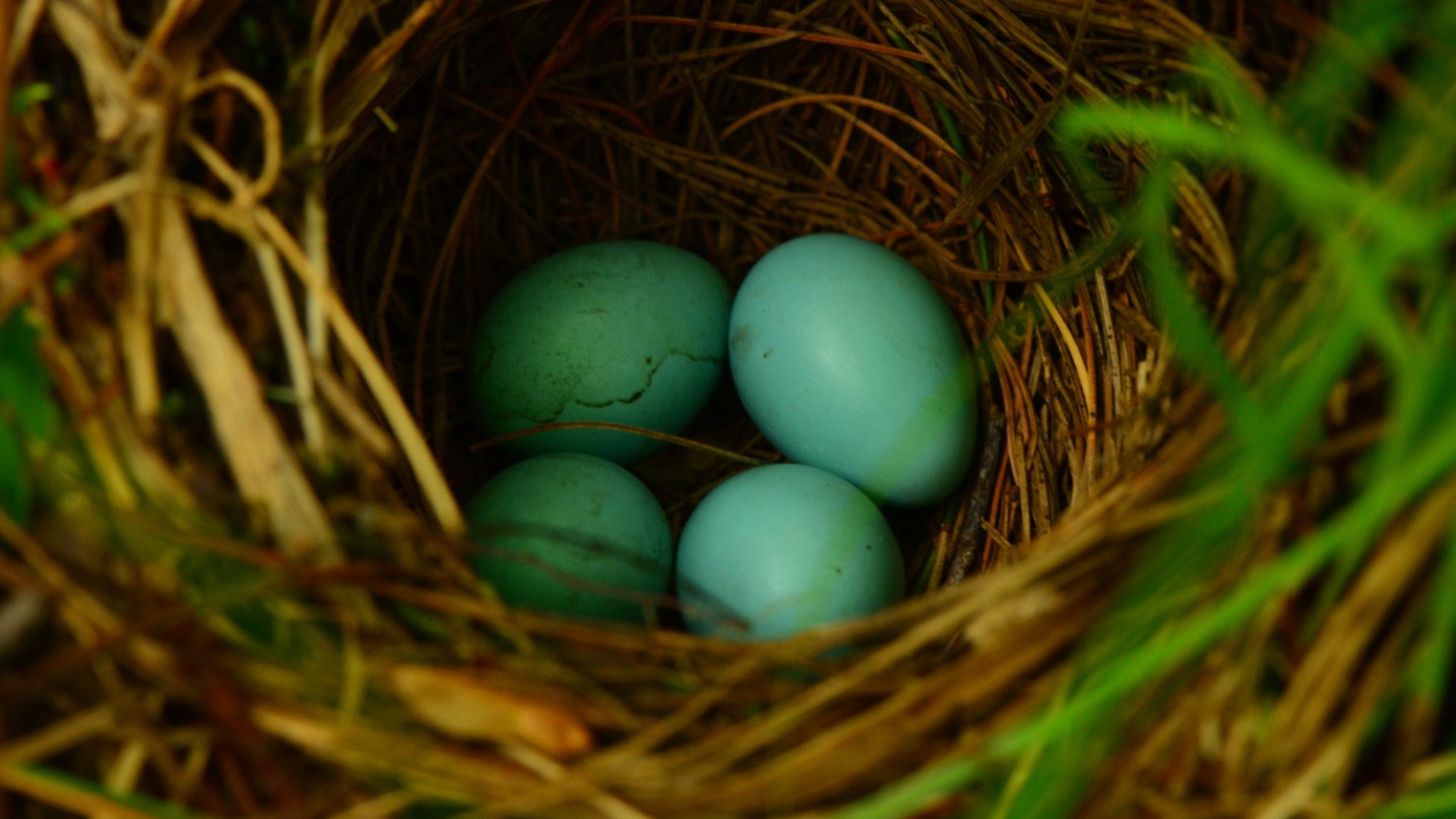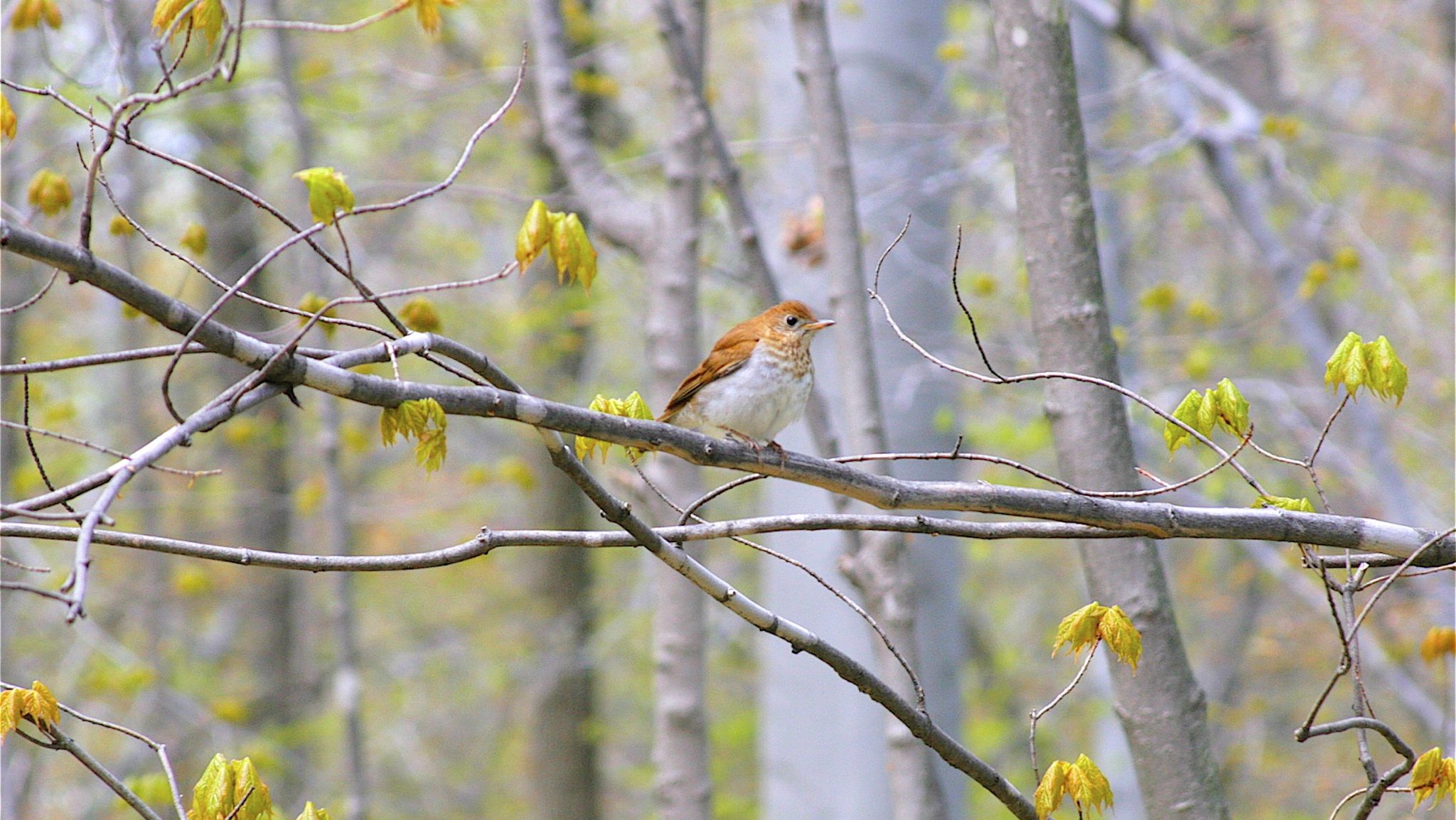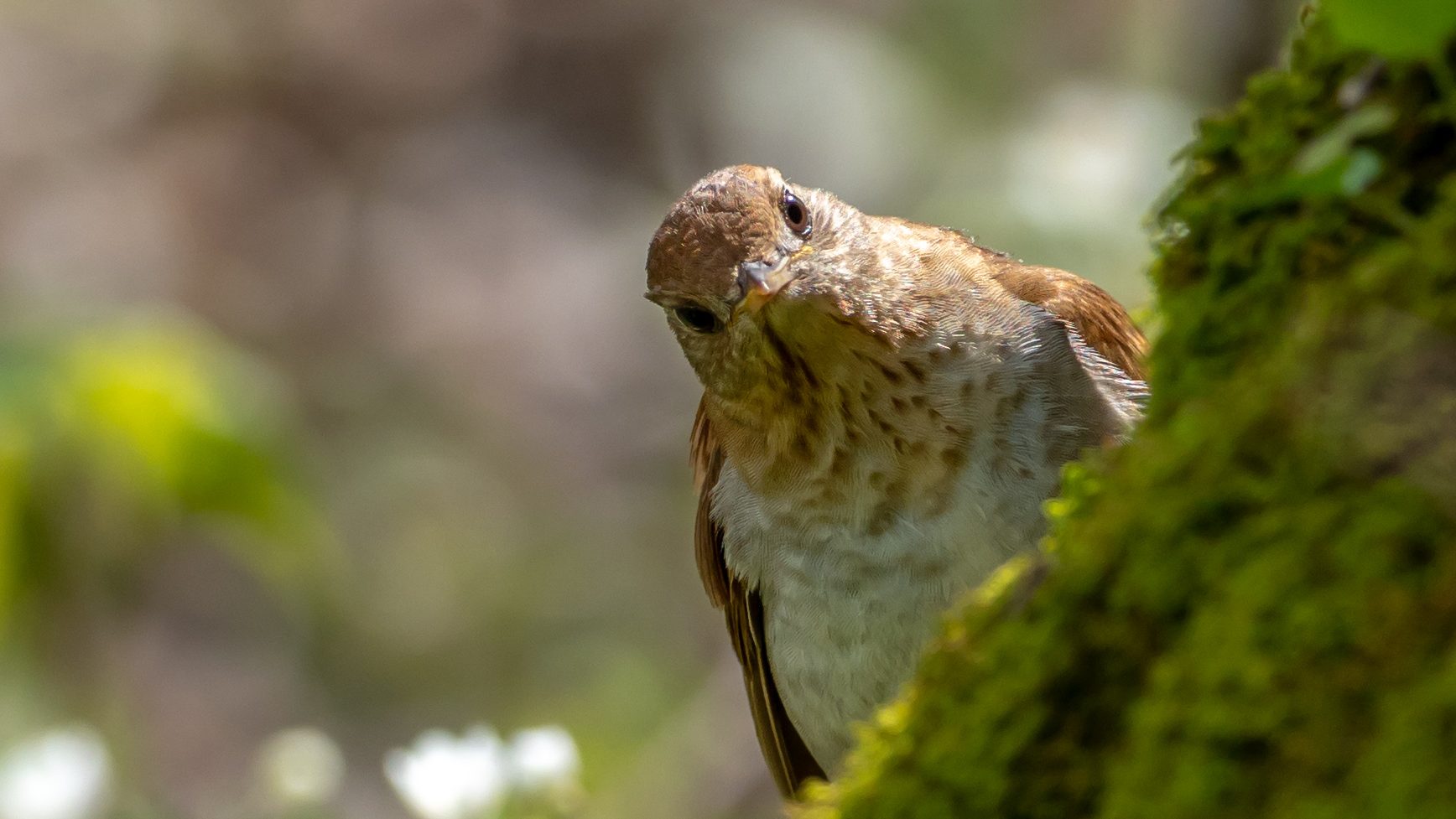Think for a minute about the veery with its cinnamon wings, plump little body and seductive call. Each spring, as the earth begins tilting away from the sun in central and southern Brazil and the days begin to shorten, it knows it’s time to fly north.
The thrush makes a quick trip, traveling sometimes up to 100 miles in a night, over mountains and countries and vastly different ecosystems, on a race to arrive at its breeding grounds in leafy woods as far north as southern Canada.
For most of history, except for outlying years, the veery would get to its breeding grounds just in time for spring green up, an explosion of insects, and the perfect environment to reproduce.
Increasingly, that’s not what the veery finds. Now spring is arriving days and even weeks earlier, leaving veery females scrambling to right-size their ovaries. They need calories after such a long, taxing migration, with energy still required to find mates, build nests and lay eggs.

And they will. Just like other long-distance migrants, the veery are hurrying to match changing springs. But their success will likely be increasingly limited.
Not as many eggs will hatch, and not as many chicks will survive. It’s a growing problem that researchers call a phenological mismatch.
What it means in practicality is that the climate is warming faster than migratory birds can keep up, and according to new research, many of those long-distance migrants will struggle to survive.
“They are flexible to a certain degree, and you expect them to adjust as conditions adjust, but those patterns evolved over thousands of years,” says Frank LaSorte, a senior scientist at Yale University and co-author on a recent paper on the topic. “There’s a certain level of plasticity, but a lot of that is hard-wired, and when the environment starts changing rapidly in one direction, at some point there will be a mismatch that can lead to population declines.”

Match Made in Migration
Birds have evolved myriad migration strategies. Some have stayed closer to home, tolerating harsh winters and readying themselves for the first food of spring. Some migrated just a bit, maybe a few hundred miles or a thousand feet in elevation. Many others learned to migrate sometimes as far as the top of North America to the bottom of South America and back. The costly journeys, often thousands of miles long, allow birds to be able to overwinter in areas with good food and breed and reproduce in similarly abundant spots.
But as climate change warms our planet, causing spring to arrive weeks earlier than it has historically, birds are struggling to keep up. It’s not just the green vegetation they miss, but the pulse of protein-rich insects many bird species consume on both their breeding grounds and their migratory stop-over points.
Biologists have been studying this over the last decade or so, and most recently a team of researchers from the universities of Oklahoma State, Yale, Cornell and other institutions, looked at the migration timing of 150 species using eBird data across the Western Hemisphere. They then contrasted that information with 20 years of satellite imagery of vegetation green up.
They found that as green up changed, largely earlier and earlier though also more erratically, birds were not keeping up.

The study looked at species spanning a breadth of sizes and life history patterns and found that the short-distant migrants may fare best. Those birds who stick closer to their breeding grounds year-round are better able to track green up more closely.
“The ones we’re most concerned with are long distance migrants,” says Ellen Robertson, co-author on the recent paper “Decoupling of bird migration from the changing phenology of spring green-up.” “They’re the ones flying 5, 6, 7,000 kilometers from where they winter to where they breed.”
Like the veery in Brazil, long-distance migrants have no way of knowing that when the sun tells them to leave, spring in Canada is well underway.
Scientists are only now beginning to understand what this may mean. A 2023 paper by University of California Los Angeles professor and researcher Morgan Tingley and many others looked at 41 species of migratory and resident North American birds and found that changing green up in the prior 18 years resulted in fewer eggs and chicks. Projected out another 80 or so years, and the shifts are expected begin to take a dramatic toll on populations.
Birds will still breed, Tingley says, but not quite as successfully because food will be more limited. Instead of chicks hatching as insect populations boom, those chicks may catch the end of the insect pulse. Put simply, birds may still find a buffet, just with a lot less food.

Can They Evolve?
The news of a seasonal mismatch resulting in even fewer birds feels dire in the face of bird populations that are already struggling. But as countries globally attempt to address warming, individuals, local governments and land managers can also make a difference. It’s entirely possible that preventing monocultures and encouraging diverse plant species could likely help, says Scott Loss, a University of Oklahoma professor and a co-author on the most recent paper.
Tingley recommends anything to support broader bird populations, protect winter ranges and breeding grounds, and conserve migratory corridors.
Meanwhile, some amount of natural selection could support those individuals that better match the changing green up, as in, the birds who migrate earlier will make more babies. But that kind of selection will only get them so far. At some point, few or no birds will have the genetic variations required to leave winter range even earlier. At that point, populations would rely on genetic mutations, which is an evolutionary process that “takes much longer than we have,” Tingley says.
Yet he and the other researchers remain hopeful.
“I’ve generally always been impressed and surprised,” he says, “by the wide variety of creative ways that birds in the natural world are adapting to the really difficult conditions that we throw at them.”
